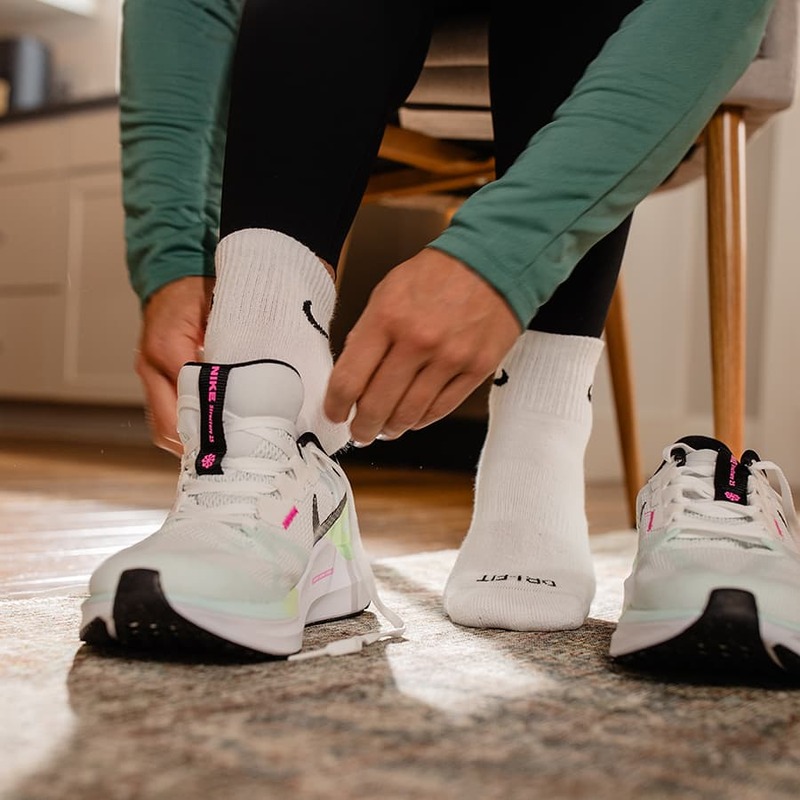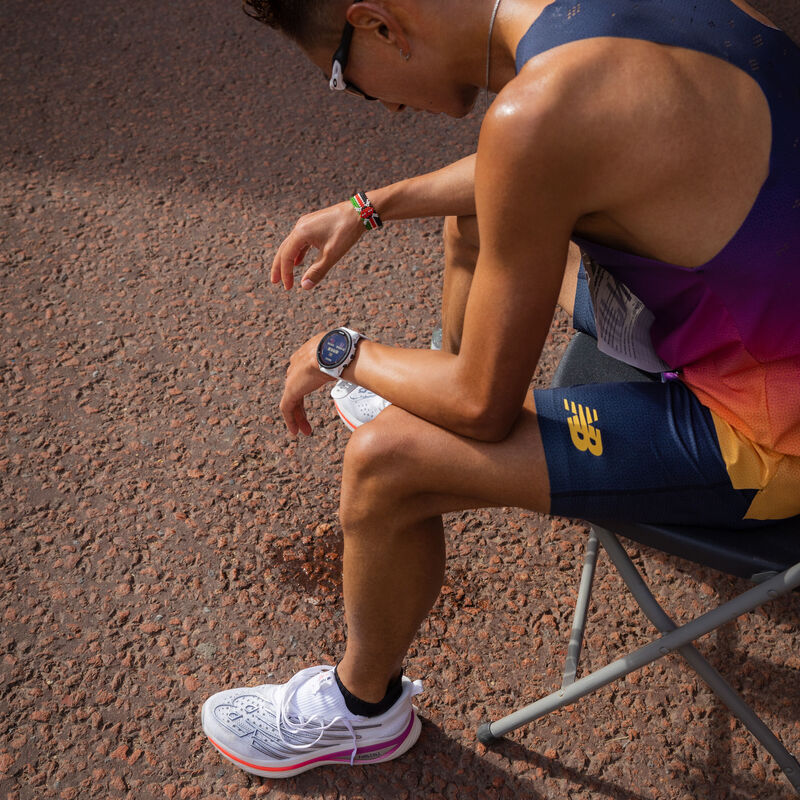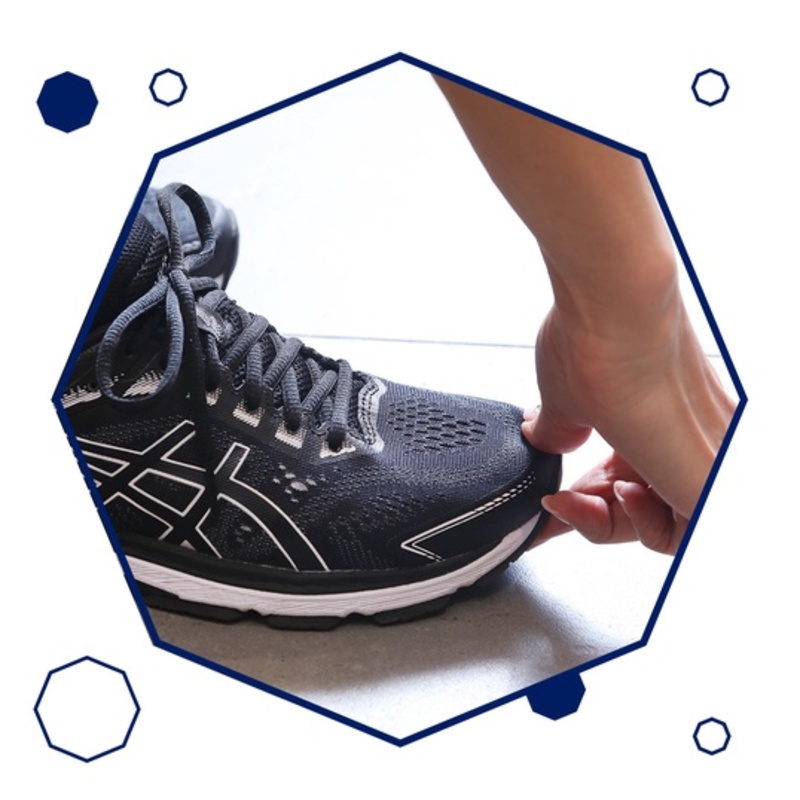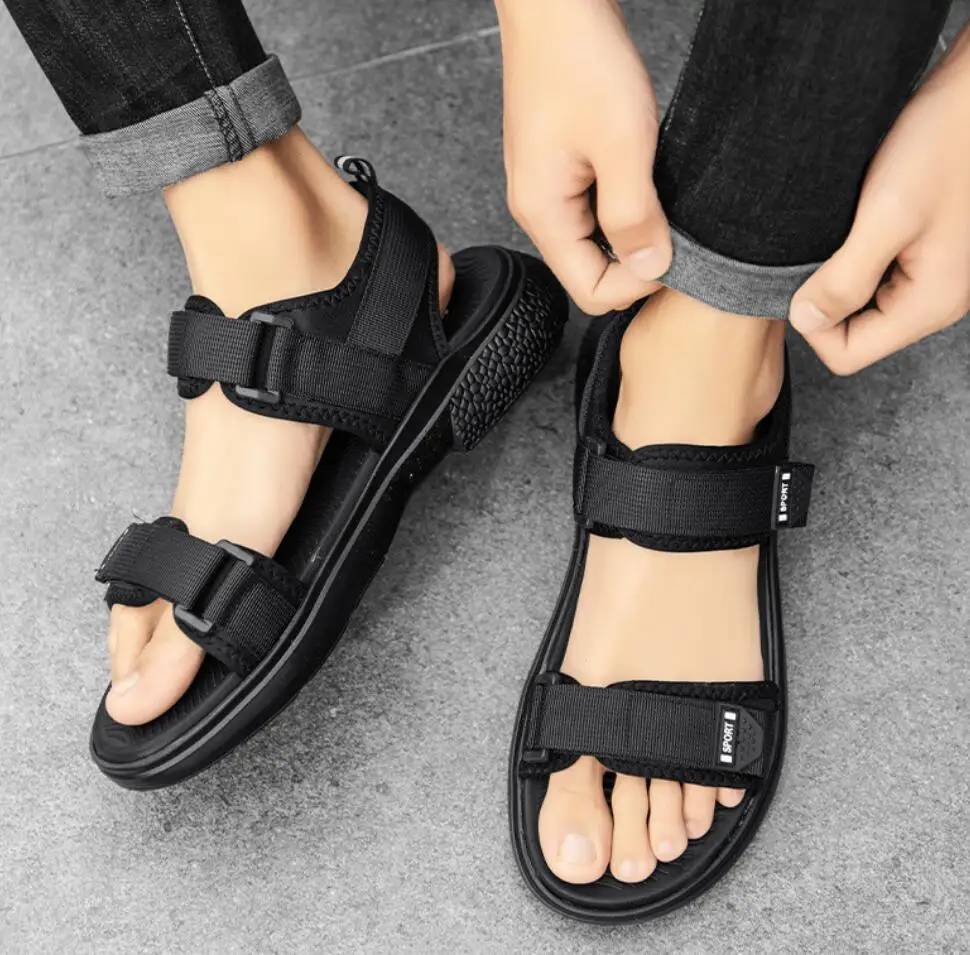Running is an excellent way to stay fit and maintain good health. However, running with the wrong shoes can lead to discomfort and injury. Therefore, understanding how your running shoes should fit is crucial. This article will guide you through the essential aspects of finding the perfect running shoe fit.
Understanding the Importance of a Good Fit
A perfect fit for your running shoes can improve performance and prevent injuries.
Preventing Discomfort and Injury
The right fit prevents discomfort and injuries by offering necessary support. Ill-fitting shoes can create issues such as blisters, calluses, and strain on muscles. Moreover, consistent use of poorly fitting shoes may lead to long-term problems. Conditions like plantar fasciitis, tendonitis, and more severe injuries can develop. These problems can hinder your ability to run and affect your daily life. To avoid such issues, it is vital to ensure your shoes fit well from the start.
Enhancing Performance
Properly fitting running shoes can significantly enhance your running performance. When your shoes fit correctly, they create a stable and comfortable environment for your feet. A good fit ensures your feet are supported in crucial areas. This results in better biomechanics and a more efficient running stride. With enhanced comfort and support, you can run longer distances without fatigue. Consequently, your overall running performance will improve.
Key Elements of a Well-Fitting Running Shoe
Knowing the elements of a good running shoe fit is vital.
Toe Box Space
Adequate space in the toe box area is crucial. Your toes need enough room to splay and move freely while running. When trying on shoes, check if your toes can wiggle without restriction. There should be around a thumb’s width of space between the tip of your longest toe and the shoe’s end. This space prevents your toes from jamming into the shoe’s front during running. Avoid tight toe boxes as they can lead to blisters and blackened toenails.
Heel Security
Your heel should fit snugly in the shoe without slipping. A secure heel fit prevents unnecessary movement that can cause blisters. To test this, try running or walking in the shoes. If your heel lifts or slips, the fit might not be secure enough. Proper heel security ensures that the shoe provides stable support. This stability is essential for maintaining balance and preventing ankle injuries.

How to Measure Your Foot Properly
Accurate measurement of your foot is the first step toward finding a perfect fit.
Using a Brannock Device
A Brannock device measures the length and width of your foot accurately. Most shoe stores have this tool available. It’s crucial to measure both feet because one foot is often larger than the other. Always choose the shoe size based on your larger foot. Place your foot on the device while standing, and follow the instructions to get precise measurements.
Home Measurement Techniques
If you don’t have access to a Brannock device, measuring at home is possible. Start by tracing your foot on a piece of paper. Measure the traced foot’s length from heel to toe and width at the widest part. This gives you an idea of the approximate size, but it may not be as accurate as a professional tool. Nonetheless, it’s a helpful method to understand your foot size and shape better.
Considering Different Foot Types
Understanding your foot type can help choose the right shoe fit.
Flat Feet
Individuals with flat feet have little to no arch. This foot type requires shoes with good arch support to prevent overpronation. Consider shoes with built-in arch support or use orthotic inserts. Stability or motion control shoes can also help in providing the required support. Proper support can prevent strain and injuries associated with flat feet.
High Arches
High arches mean that your feet have a pronounced upward curve. People with high arches often need shoes that provide additional cushioning. This helps absorb the impact since their feet do not flatten enough to provide natural shock absorption. Look for shoes with enhanced cushioning in the midsole area. This cushioning prevents stress on your heels and balls of your feet.
Trying on Shoes for the Best Fit
Trying on shoes at a store can ensure you get the best fit.
Shopping in the Afternoon
Your feet swell throughout the day due to standing and walking. Therefore, shopping for running shoes in the afternoon will give you a more accurate fit. This accounts for the swelling and ensures the shoes won’t feel too tight when your feet are at their largest. As a result, you’ll avoid discomfort during runs, especially long ones when your feet swell more.
Wearing the Right Socks
When trying on running shoes, wear the type of socks you plan to run in. The thickness and material of the socks can affect the fit of the shoes. Running socks can differ from regular ones in terms of padding and breathability. Wearing the appropriate socks ensures that you get a true feel of how the shoes will fit during your runs.

Paying Attention to Running Shoe Features
Certain shoe features contribute to a better fit.
Lacing Systems
Different lacing systems can help optimize fit and comfort. Some shoes have traditional laces, while others may feature advanced lacing systems. Experiment with different lacing techniques to find the one that best secures your foot. Properly tightened laces prevent your foot from sliding inside the shoe. This reduces the risk of blisters and enhances overall stability.
Material and Flexibility
The material of the running shoe affects its fit and flexibility. Shoes made of breathable materials allow better air circulation, preventing excessive sweating. Flexible materials enable the shoe to move naturally with your foot. This ensures a better overall fit and comfort. Choose materials that are both durable and flexible for the best running experience.
Review and Final Adjustments
Before making a final decision, review and adjust for perfect fitting.
Short Test Run
Before buying, take the shoes for a short test run, if possible. Many stores have treadmills for this purpose. A test run will help identify any potential issues with the fit. Pay attention to any areas that feel too tight or loose. This real-world testing ensures that the shoes will be comfortable during actual runs.
Listening to Your Feet
Pay attention to any discomfort or unusual sensations in your feet. Your feet are the best indicator of whether the shoes fit correctly. If something doesn’t feel right, don’t ignore it. A minor issue can turn into a major problem over time. Trust your instincts and choose the shoes that feel the most comfortable and supportive.
The Role of Expert Advice
Seeking expert advice can be incredibly helpful.
Consulting a Podiatrist
A podiatrist can provide professional insights into your foot type and needs. They can recommend specific types of running shoes that will work best for you. Podiatrists can also identify any foot conditions that might require special shoe features. Consulting a podiatrist ensures that you’re choosing shoes that support your overall foot health.
Visiting Specialty Running Stores
Specialty running stores employ knowledgeable staff who can assist you. These experts can measure your feet and analyze your gait. They will recommend shoes that suit your specific running style and needs. Specialty stores often offer a better selection of high-quality running shoes. Their personalized service makes finding the perfect fit easier.

Maintaining Your Running Shoes
Proper maintenance can prolong the life of your running shoes.
Regular Cleaning
Keep your running shoes clean to maintain their performance and lifespan. Remove dirt and debris from the shoe’s surface regularly. Use mild soap and water for deeper cleaning, especially for the insoles. Avoid putting the shoes in a washing machine as it can damage them. Handwashing preserves the shoe’s material and structure.
Monitoring Wear and Tear
Keep an eye on the wear and tear of your running shoes. Running shoes typically last between 300-500 miles, depending on various factors. Worn-out shoes lose their support and cushioning, leading to potential injuries. Regularly inspect your shoes for signs of excessive wear, especially in the soles and uppers. Replace them when necessary to ensure continued comfort and support.
Conclusion
Finding the perfect fit for your running shoes involves several crucial steps. From understanding the importance of a good fit to considering your foot type, each factor plays a role. Accurate measurement and trying on shoes correctly can make a significant difference. Paying attention to features and seeking expert advice further ensures the best fit. Proper maintenance of your running shoes prolongs their lifespan. By following these guidelines, you can enjoy a more comfortable and injury-free running experience.



